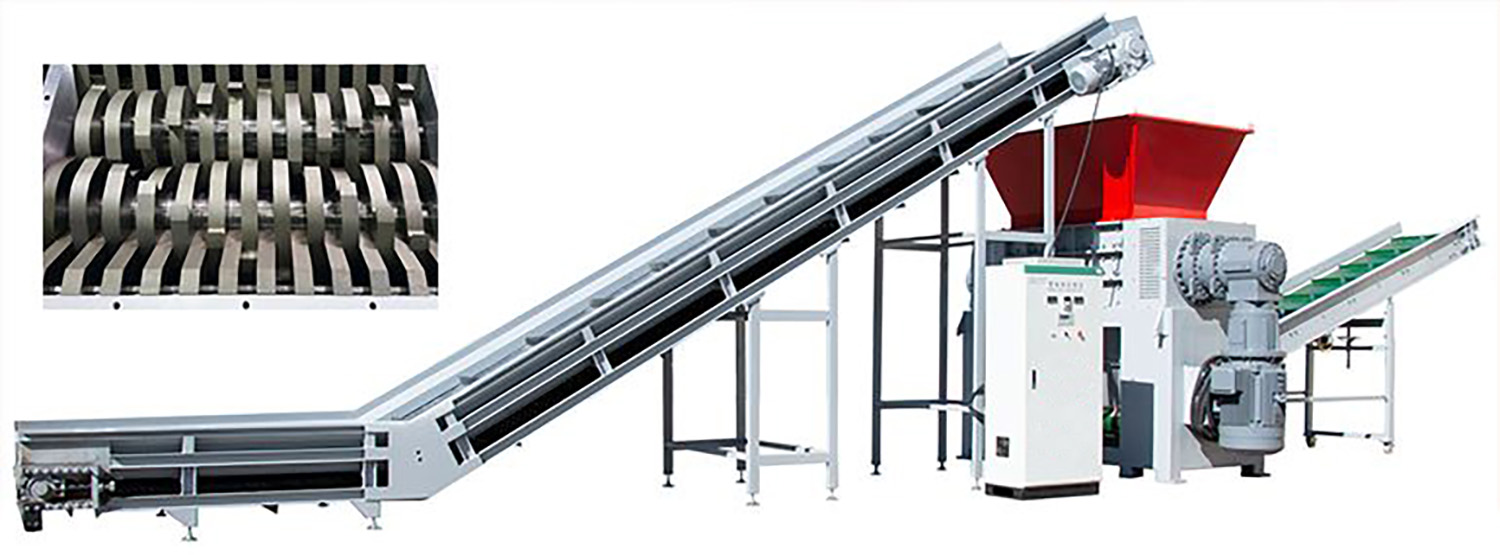+86-13915777605 WhatsApp:+86 13915777605
- All
- Product Name
- Product Keyword
- Product Model
- Product Summary
- Product Description
- Multi Field Search
Views: 0 Author: Site Editor Publish Time: 2022-07-17 Origin: Site

The shredder is an environmentally friendly device that can shred waste plastics, waste plates, waste tires and other waste recyclable resources for recycling. In terms of comprehensive utilization, it is a device that turns waste into treasure. The working principle of the shredder is also different from that of the shredder. The shredder is a machine with a low-speed and high-torque knife roller. It can decompose large objects into irregular small pieces, and the shredded small pieces are small. Blocks are usually 20mm–200mm or larger in size. It is a professional machine for shredding solid waste. It usually includes several common specifications such as single-shaft shredder, double-shaft shredder, four-shaft shredder, horizontal shredder, and plate shredder. The shredder uses a tool to cut, shred, and tear the material to shred the material. It is generally used to process unprocessed raw materials or scraps. A representative example is to shred plastic or rubber scraps and use them as raw materials to melt and granulate them to remake plastic bottles, tires or trash cans. The shredder is used in the plastic recycling industry, and is often used for the shredding of waste large-diameter PE plastic pipes, bundled plastic films, large piles of plastic sheets and machine head materials.

Crusher generally refers to the equipment for crushing stones in mines. It is two different concepts from what we call the crusher in the plastic recycling industry. The crusher in the plastic recycling industry refers to the waste materials passing through high-speed rotating blades The way to chop into small particles becomes a raw material that can be reused! The principle is to chop the material by mutual shearing with the high inertia impact matching and the sharp-edged rotating movable knife and the fixed knives fixed on both sides of the rotating shaft. Generally speaking, large-sized materials (such as large pipes) are first torn into blocks with a shredder, and then broken into small pieces by a shredder, which are used as raw materials for reprocessing.

First of all, the size of the material targeted by the shredder and the shredder is different. The shredder is to tear the material into irregular 20mm-200mm or even larger size blocks. The crusher is to further crush these block materials into small pieces below 20mm, so as to achieve the conditions for further processing, such as granulation after cleaning.
Secondly, the principle is different, the speed of the shredder is very slow compared to other shredders. The principle of the shredder to shred materials is mainly to tear, cut and shred various materials by low speed, large torque, and the speed difference between the shafts. The crusher uses a high-inertia impact matching and a sharp-edged rotating movable knife and a fixed knife fixed on both sides of the rotating shaft to cut the material into pieces by mutual shearing.
Finally, most of the shredded materials are stubborn materials with high strength, large size and strong load, and most of the materials processed by the shredder are conventional materials with low load and small size. From the point of view of use, shredding has the advantages of safer, less manual operation and low noise. Crushing is relatively noisy and requires more manual operation and maintenance.
How to choose the right equipment, we must first clarify two questions: 1. What material do you need to crush and what is the original form of the material? 2. What particle size (size) do you want the material to be crushed into? These two factors will determine your investment cost as well as your production efficiency. For example, are your materials plastic, paper, rubber, PVC, old tires, household waste, sheet metal, large furniture and sofas, fruit and vegetable waste, iron stamping scraps, machine head materials, medical waste or something else? What are you going to do with the scraps after crushing? How big do you need to break the material, like 100mm, or 10mm, or less? With the answers to these questions clear, you can choose the right machine based on some simple criteria.
1. Reduce the space occupied by garbage, thereby reducing the cost of domestic garbage consignment.
2. Tear waste such as old tires into pieces for fuel or filler.
3. Break paper or confidential documents to make them unrecognizable and unreadable
4. Shredding waste plastics before cleaning and regeneration.
5. Destruction of counterfeit and defective products and electronic hard drives
6. Volume reduction of bulky waste and industrial hazardous waste.
7. Pretreatment and crushing of fruit and vegetable waste and organic waste in the early stage of landfill fermentation
8. To prepare for the next process, the material needs to be refined.

